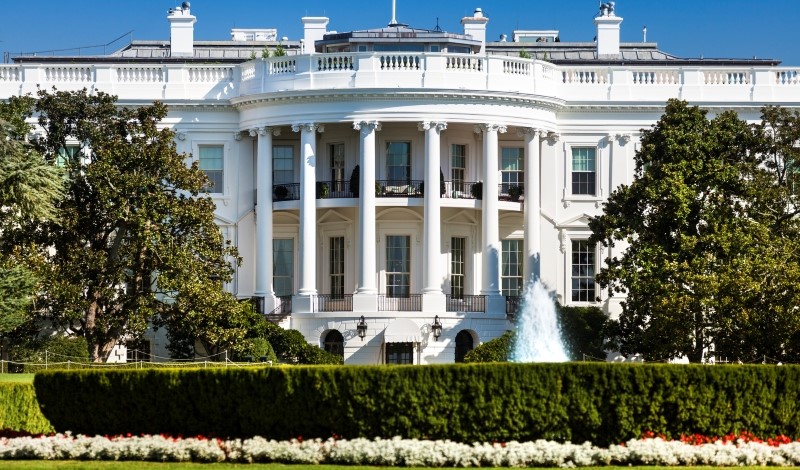
The Biden Administration reimagines the federal government’s regulatory framework.
Last month, President Joseph R. Biden released his long-awaited executive order on “modernizing” regulatory review,” fulfilling a promise he made upon assuming office to make the White House review process more supportive of strong regulatory safeguards and more attentive to equity and distributional concerns.
The executive order consists of three main parts, which address both the mechanics of the White House Office of Information and Regulatory Affairs’ (OIRA) review process and the particular methodologies of cost-benefit analysis. The first part diminishes OIRA’s review function by significantly reducing the number of rules eligible for centralized review.
The second part in effect creates a new “role” for OIRA by directing it to work with executive branch agencies to identify ways to make the rulemaking process more inclusive, especially for members of structurally marginalized communities.
Lastly, the third part focuses on “improving” cost-benefit analysis. Most notably, this part launches a comprehensive overhaul of Circular A-4, which for the last 20 years has provided agencies with an instruction manual on how to conduct cost-benefit analyses on their rules.
Given the intrinsic flaws of cost-benefit analysis, we were disappointed that the order maintains the prominent place it has played in the regulatory review process, but that is a subject for a different day.
Overall, it is tempting to conclude, as many have, that this new executive order is merely an incremental reform of Executive Orders 12866 and 13563, which currently govern the regulatory review process. After all, unlike many executive orders of this type, the new order conspicuously lacks a preamble through which President Biden might offer his own distinctive vision of the regulatory system and the role it should play in democracy and the economy.
Instead, the order begins with a synopsis of its aims before dedicating its first operative provision to “supplementing and reaffirming the principles, structures, and definitions governing contemporary regulatory review.” Moreover, viewed in isolation, each of the order’s substantive provisions seem to offer only modest tweaks to the existing executive orders, and only one explicitly amends Executive Order 12866.
But if you scratch beneath the surface, it is possible to detect that a lot more may be going on. In particular, each of its “little” changes can be understood as reflecting and advancing an entirely different vision of the regulatory system than that contained in Executive Order 12866. And, when added up, these changes might even have the potential to herald an entirely new era in federal regulation.
The new regulatory vision implicit in President Biden’s executive order comprises three elements.
First, in stark contrast to Executive Order 12866, President Biden’s order seeks to make solving public problems the central concern of regulatory policy, rather than the advancement of artificial philosophical commitments or abstract ideas such as economic efficiency. Under the new order, regulatory policy will no longer subordinate people to abstract ideas. The order’s subtle but important shift is apparent from the provisions dedicated to engaging the public in shaping agencies’ workloads, including through the Administrative Procedure Act’s petition process and designing agencies’ semiannual regulatory agendas.
The order’s people-focused orientation also runs through the changes it makes to regulatory analysis. Rather than the existing myopic focus on maximized utility, the order declares that cost-benefit analysis should seek to “serve the public interest.”
In addition, the order seeks to humanize cost-benefit analysis by demanding that it account for “distributive impacts and equity.” The failure of the existing approach to reckon with such issues results in a misleading “flattened” portrayal of society, which risks reinforcing the inequities and structural sources of injustice that are at the heart of many policy challenges.
Second, the order accepts the inescapable role that the regulatory system plays in the allocation of economic and political power in the United States. This is critical because, insofar as many of the challenges that policymakers seek to address through regulation are rooted in structural power disparities, the mechanisms by which regulations are implemented must be designed to recognize and account for those disparities. Executive Order 12866, however, ignores this reality and instead pretends that the regulatory system can and should somehow transcend the political fray.
One way the order makes clear its appreciation for the role of power in regulation is through its distinctive new goal for public participation in the rulemaking process. By holding that public participation must be “equitable and meaningful” and that special attention be given to including “underserved communities,” this goal imposes an affirmative obligation on federal rulemaking agencies to obtain input from members of the public who historically have been excluded from the process. The old approach, which required agencies to simply maintain an “open door policy” to public engagement and passively receive input, remained ignorant of the power structures that contribute to vast disparities in engagement.
The order also reforms the lobbying meetings that OIRA hosts in conjunction with its reviews of agency rules. Empirical evidence documents how these meetings provide powerful industries with a conduit to weaken or block rules they oppose. Significantly, the order seeks to both increase public participation in these meetings and prevent industry dominance and abuse.
Third, the order seeks to recalibrate the relative roles of democracy and technocratic expertise in the regulatory system. The prevailing Executive Order 12866 regime has tended to treat public input with something like benign neglect, if not outright disdain. In this regard, the 12866 regime perceives regulatory decision-making as little different from solving a complex math equation, and thus the exclusive province of technocratic experts.
President Biden’s order begins to strike a new balance, however, by limiting the scope of OIRA’s review function, where technocracy has traditionally held considerable sway. At the same time, the order includes several measures aimed at expanding public participation in various stages of the rulemaking process, including during OIRA review.
Despite the three elements of the new executive order that we see articulating a new vision of regulatory review, we acknowledge that we are left to speculate what, if anything, this order has to say about President Biden’s vision for the regulatory system more broadly. Such an omission, which arises at least in part from the lack of an overarching preamble in the new executive order, is one of that order’s great missed opportunities—one that is especially disappointing given that historically presidents have deployed executive orders as powerful messaging tools.
Ultimately, we will not know the executive order’s full import until the Biden Administration implements its provisions. Nevertheless, the order appears to plant the seeds for a regulatory revolution. The question is: Will the Biden Administration choose to cultivate them?





